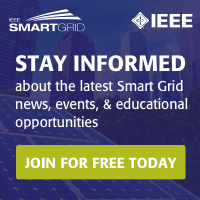Could U.S. utilities be the Next to say ‘if only?’
India's power has been restored, but leaves lasting impression
Northern India's electricity has been restored after 600 million people were left in the dark for two days last week. While an outage of this magnitude is unlikely to occur in the U.S., grid stability and capacity are still a global concern. Read more
Lieberman-Collins bill balances cyber security with grid reliability
Publication: FierceSmartGrid
Issue Date: Aug 2012
Critical infrastructure companies, including utilities, may soon receive Federal guidance on cyber security best practices, an issue that many utilities have struggled with as they look to balance smart grid security and reliable electricity delivery. Read more
Justifying synchrophasors in the smart grid
Financial, operating efficiencies just a glimmer of the benefits
Emerging hardware and software technologies will benefit the electric utility industry by making transmission and distribution operations more efficient, reducing the probability of blackouts and brownouts and giving power suppliers the option of deferring costly new construction. Read more
John McDonald of IEEE Smart Grid comments on India's Grid Failure on WYNC Radio
When Power Grids are Too Big To Fail
The power outage in India grew yesterday to become the world’s most massive grid failure, ever. Networks serving 680 million people collapsed. So what determines whether or not a power grid works or fails? Could what happened in India happen to us, here in the United States? Read more
Sizing up Telecom's influence on the Utility Industry and Smart Grid Development
Publication: FierceTelecom
Issue Date: July 2012
For those of us who have lived through the advances made in communications technology over the past 20 years, it is hard to imagine how we functioned with so little information a mere two decades ago. In the preceding decades, much of the innovation that took place in telecommunications was behind the scenes and largely invisible to the consumer. Entire infrastructures changed as consumers experienced innovations that took them from the rotary dial to touch tone phones. The same is true today as wireless technologies enter their 4G era (which represents many more than four refreshes of underlying infrastructure). The difference in the last 20 years is that more of the innovation and change has been experienced, and funded, by the consumer, as they elect to pay for value added services like texting and data plans while receiving new handsets every two years. Read more
Living In The Dark: Why The U.S. Needs To Upgrade The Grid
Guest post written by Massoud Amin
Publication: Forbes
Issue Date: July 2012
In July 1977, I was a 16-year-old high school student visiting New York City, excited to see the Statue of Liberty, the Empire State Building and other iconic sights. While I was there, lightning triggered a 24-hour blackout that cut power to nine million residents. During the darkness, I witnessed both the chaos and kindness that result from severe power outages. Looters smashed their way into electronic stores, there were about 3,800 arrests, fires burned across the city and normal life came to a halt. Read more
‘Energy rationing’ ≠ a smart grid.
Publication: The Energy Collective
Issue Date: July 2012
Warren Causey, a well-known energy consultant, blogger and colleague of mine, regularly poses the following thought to the power industry. Although it’s a minority view today, I’d like to examine his idea to see where the discussion takes us. Read more
Change the grid, not the customer?
Industry veteran suggests emphasis on utility side
Publication: Intelligent Utility
Issue Date: July 2012
Steve Collier, an electrical engineer and IEEE smart grid "expert" (so designated due to his experience with the grid and the new technologies being applied to it), has worked in many roles in the power, telecom and software industries. We talked earlier this month about a few issues in grid modernization. Read more
Smart Conservation for the Lazy Consumer
People aren’t conserving energy for love or money—you have to trick them into it
Publication: IEEE Spectrum
Issue Date: July 2012
If your electric company tells you to cut back your energy use or face the possibility of a blackout, you’ll probably comply. You’ll turn off unnecessary lights and appliances and use the air conditioner less. But the moment the crisis is averted, you’ll quickly return to your old habits. That’s because in spite of what people say about wanting to protect the environment and save money, they rarely limit their energy consumption to achieve these goals. Convenience always trumps conservation. Read more
Vehicle-to-Grid
Publication: Green Technology World
Issue Date: June 2012
As electric vehicles become more widely deployed the public is having to deal with many new acronyms; BEV (Battery Electric Vehicles), PHEV (Plug-in Hybrid Electric Vehicles), EREV (Extended Range Electric Vehicles) and V2G (Vehicle-to-Grid). Many of these acronyms are fairly easy to understand, but V2G is a very complex term that can have many meanings depending on the context. Read more


